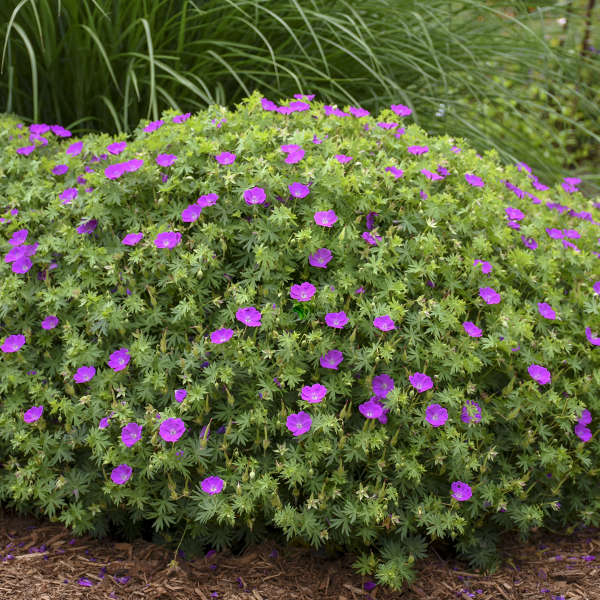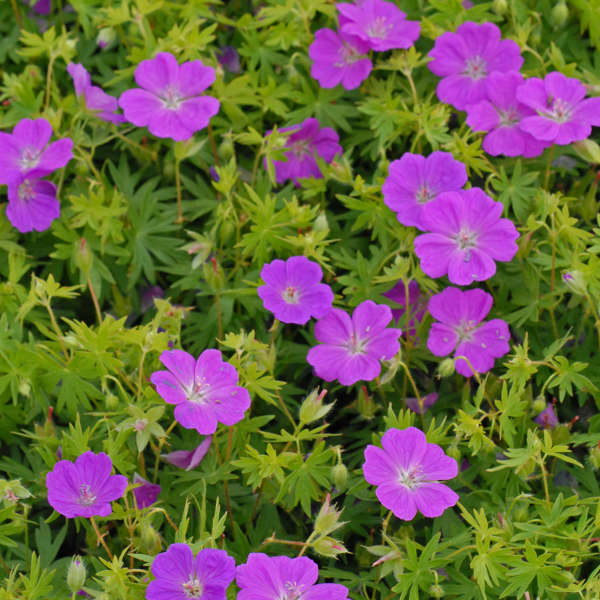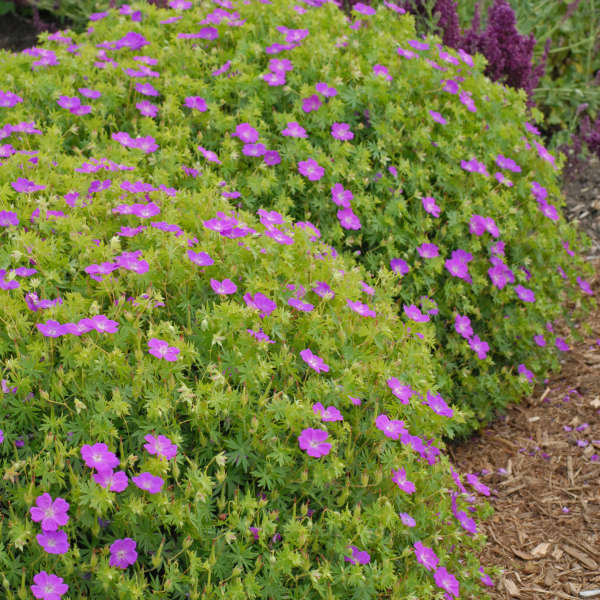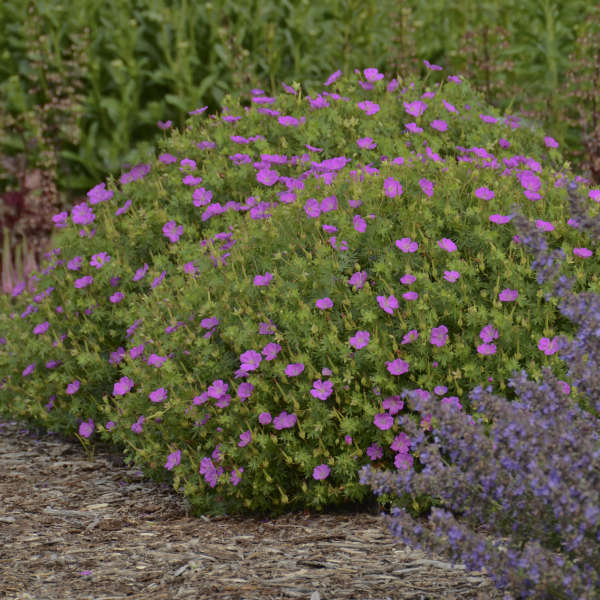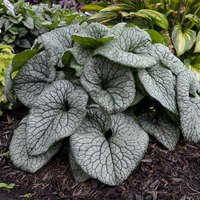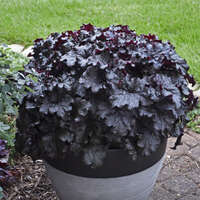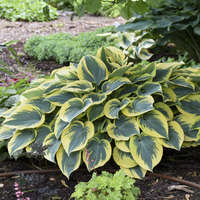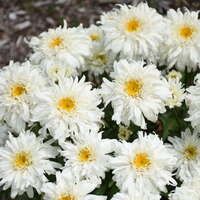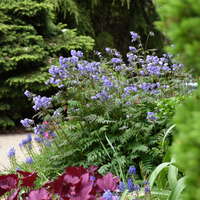Geranium sanguineum 'New Hampshire Purple'
Common Name: Hardy Geranium, Bloody Cranesbill
A profusion of magenta-purple flowers atop compact, spreading mounds of leaves makes this one of the best low-growing cranesbills.
Intricately cut leaves are green for most of the season but earn their namesake from the brilliant crimson-red they turn in fall.
This species is so adapatable that it handles both hot summer and cold winter climates with ease.
30ct Plug Tray |
